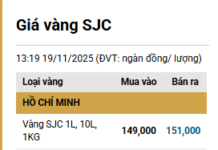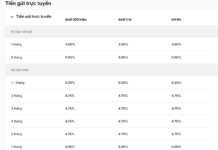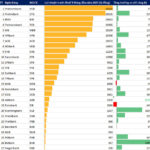According to the latest report from IMARC Group, a market research organization, Vietnam is expected to achieve a digital economy scale of 220 billion USD by 2030. Notably, e-commerce is emerging as a crucial driver, propelling the country’s assertiveness in Southeast Asia and attracting global investors’ attention.
Currently, Vietnam boasts one of the fastest-growing e-commerce markets in the region. E-commerce accounts for over 60% of the country’s digital economy structure, while the remaining portions are mostly comprised of ride-hailing and online media services.
SEVEN FACTORS ATTRACTING FOREIGN INVESTMENT
As per IMARC’s insights, Vietnam’s e-commerce sector is projected to maintain its robust growth trajectory, attaining a remarkable CAGR of 28% during 2025-2033.
This development is primarily propelled by factors such as the surge in internet and mobile device usage, the expansion of electronic payment methods, and, most notably, a conducive legal environment. The Vietnamese government has implemented robust policies to encourage digital transformation, including the goal of reducing cash transactions to below 10% of the total.
IMARC’s report also highlights that the robust growth in e-commerce positions Vietnam as one of the most promising markets in Southeast Asia. This growth is fueled by seven pivotal factors:
The surge in internet and mobile device usage: Vietnam’s remarkable progress in internet and mobile adoption provides a robust foundation for digital transactions.
Government commitment to digitization and infrastructure enhancement: The Vietnamese government has demonstrated a strong commitment to digitizing the economy and improving broadband infrastructure. These policies, coupled with a tech-savvy young population, facilitate easy access to online services.
Advancements in electronic payments: Progress in the electronic payment system has enhanced security and user-friendliness. Electronic payments in Vietnam have made significant strides year after year.
The rise of artificial intelligence and machine learning: The application of AI and ML technologies in personalized marketing, predictive data analytics, and customer service automation has unveiled lucrative opportunities for businesses.
Logistics and supply chain improvements: The boom in e-commerce and third-party logistics services (3PL) in recent years in Vietnam can be considered a magnet attracting investors’ interest.
Cross-border e-commerce and free trade agreements: The development of cross-border e-commerce is significantly boosted by free trade agreements (FTAs) and special economic zones dedicated to the industry. This enables Vietnam to attract international investment and expand markets for domestic enterprises.
The rise of the middle class and disposable income: Vietnam’s middle class is expanding rapidly, with a growing trend of online shopping for both essentials and luxury items. This shift contributes to the expansion of the e-commerce market, creating substantial consumption for online retail platforms.
On the other hand, according to statistics from the State Bank of Vietnam, in the context of the COVID-19 pandemic in 2020, the number of cashless transactions through payment methods increased by 72%, although the transaction value rose only 16%, mainly due to the trend of paying for small transactions. The stock market boom in 2021 boosted electronic payments, but the number of transactions increased only 36%, with the transaction value maintaining a 16% growth rate.
However, in 2022, as lockdown measures were lifted, electronic payments experienced robust growth, with an 89% increase in transaction volume and a 32% rise in transaction value, marking a significant shift in the payment habits of the population.
A HUB FOR INTERNATIONAL INVESTORS
According to a survey by the global consulting firm Facebook and Bain & Company, Vietnam is projected to surpass other Southeast Asian countries and become the region’s fastest-growing e-commerce market by 2026.

Vietnam attracts not only regional investors but also significant interest from developed countries. E-commerce platforms like Tiki, Sendo, and Thegioididong, coupled with investments from nations such as Japan, the United States, Germany, South Korea, and Singapore, have fostered a robust e-commerce ecosystem in Vietnam.
Singapore, as a regional economic hub, is closely intertwined with Vietnam’s e-commerce market through prominent platforms like Shopee and Carousell. Simultaneously, investors from South Korea, such as Coupang (dubbed the “Amazon of South Korea”), are also seeking to penetrate the Vietnamese market to leverage technology and logistics potential. Conglomerates like Samsung and LG are increasing their investments in Vietnam’s e-commerce infrastructure to promote their electronic products.
Another projection by the International Monetary Fund (IMF) indicates that Vietnam will rank third in the ASEAN region in terms of Gross Domestic Product (GDP) by 2025, with 571.12 billion USD, following Indonesia (1,630 billion USD) and Thailand (632.45 billion USD). Notably, Vietnam’s economy is predicted to surpass that of Thailand after 2028.
This growth trend is expected to provide a substantial boost to the development of Vietnam’s e-commerce sector. As consumer purchasing power increases and foreign investment pours in, Vietnam will solidify its position as a leader in the region’s digital economy.





































